Features and types of LED curtains
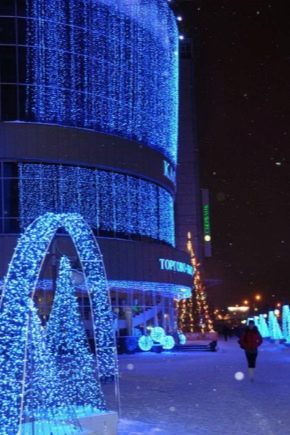
LED garlands have become part of the life of modern cities over the past decade. They can be seen especially often on holidays. They create a unique and lively atmosphere in which there is optimism and joyful mood. At the mention of the word "garland", the New Year and the festive tree are immediately remembered. Technology does not stand still, and garlands are now found almost everywhere.
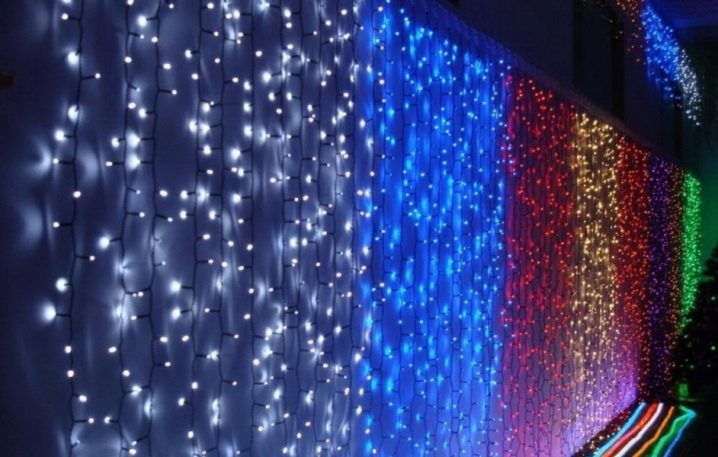
Device and principle of operation
In English, the abbreviation LED translates as a light source in the form of an LED lamp. The design is fundamentally different from incandescent lamps or fluorescent lamps. LEDs are distinguished by their low cost and long service life.


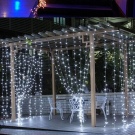

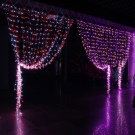
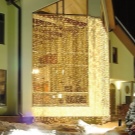
An LED operates on semiconductor crystals that allow electricity to pass in one direction. The crystal is based on a special base that does not allow heat to pass through. The casing reliably isolates the light source from extraneous mechanical influences. The gap between the lens and the crystal is filled with silicone. Excess heat (if a little) is dissipated by an aluminum plate. The device has a transition consisting of holes, this is due to the basis of the functioning of various elements.

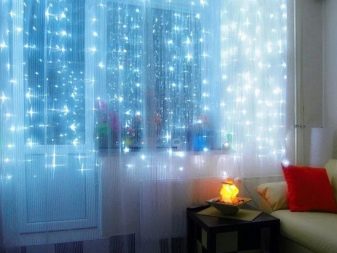

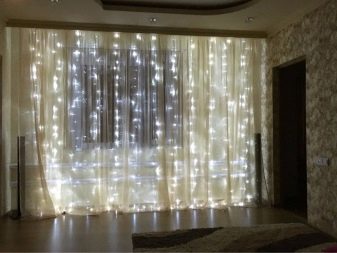
A semiconductor device has a large number of electrons; the other conductor has a large number of holes. Due to the doping principle, a material with many holes receives particles that carry a negative charge.
If an electric current with different charges is applied at the intersection point of semiconductors, then a displacement is formed. Then an electric current will flow through the adapter of the two materials. When holes and electrons collide, an excess amount of energy is born - these are quanta of light called photons.
Diodes consist of different semiconductors, due to which there is a different color of the luminous flux, semiconductor materials are usually:
- gallium, its phosphide;
- ternary compounds: GaAsP (gallium + arsenic + phosphorus), AlGaAs (aluminum + arsenic + phosphorus).
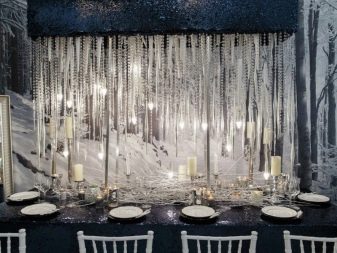


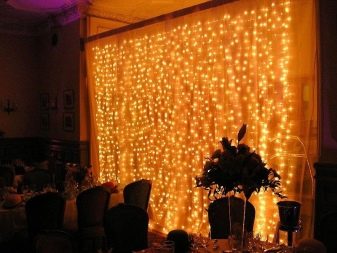
Diode strips are capable of reproducing a wide variety of colors of light fluxes. If there is a monocrystalline device, then it is realistic to create a variety of colors. Using a special RGB principle, the LED can generate an infinite number of colors, including white light. LED indicators consume 2-4 volts (50mA current). To make devices for street lighting, products with an increased voltage level of 1 A are required. When connected in series, the total voltage level can reach 12 or 24 volts.
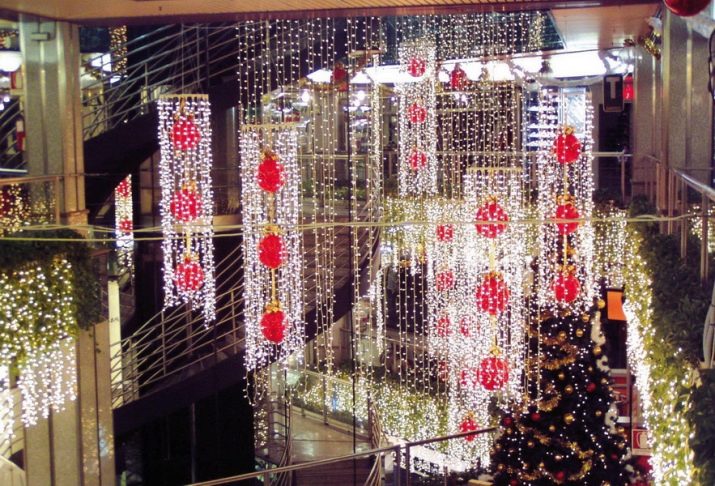
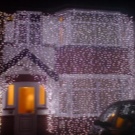
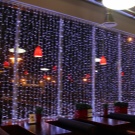

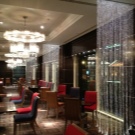
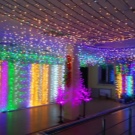
Application area
LEDs are used not only for street and indoor lighting of houses or apartments. LED garlands have been used to decorate many objects for the last twenty years. For example, purchasing a Play Light might be an excellent solution.
This decoration can also be suitable for external decoration:
- residential buildings;
- shops;
- catering establishments.
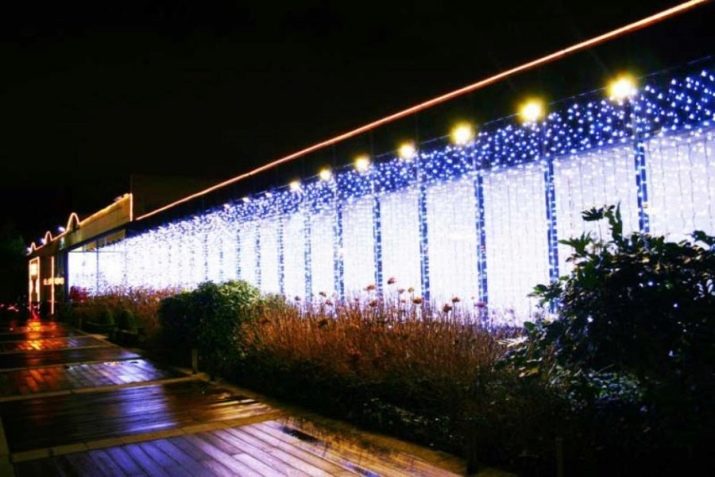
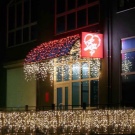
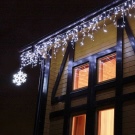
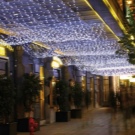
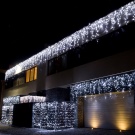

The garland, called "rain," is made up of various luminous filaments along which light sources are located along their entire length. Each "branch" is attached to the main bus with a special fastener-coupling. The LEDs are spaced at a certain distance from each other.Their shape may vary, most often they are found in the form of small spheres.
Such light constructions are called:
- garland rain;
- Garland Play Light;
- light curtain.
- many other names.
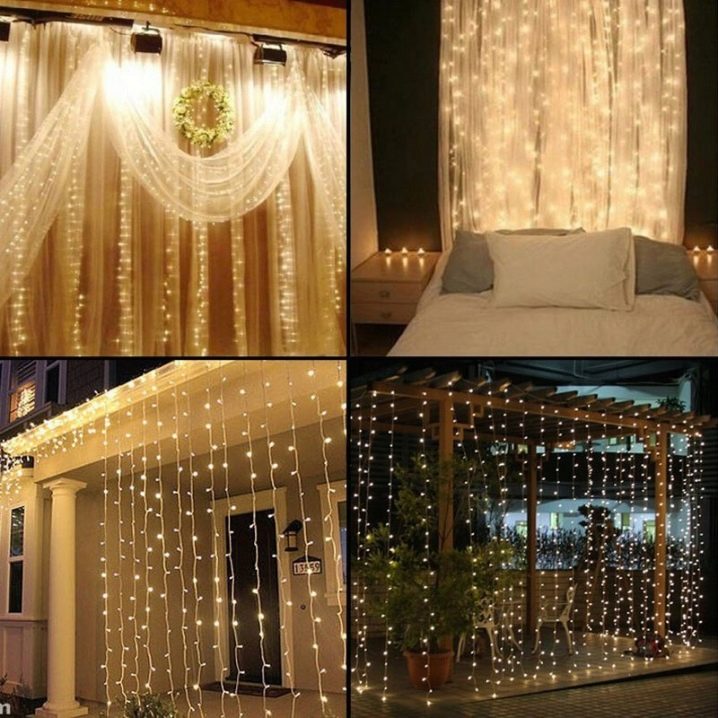
The quality of the product, the strength with which the elements are connected, affect its wear resistance. Garlands are located in an unfavorable environment, where there is a significant drop in humidity and significant subzero temperatures. All this, of course, affects the functioning of LED devices.

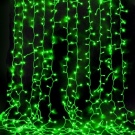
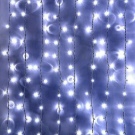

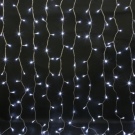

If a product is made of low-quality plastic, then it quickly loses its functional qualities, begins to crack and break. Bare wires appear, which can lead to a short circuit and damage to the garland. When purchasing, it is recommended to check the output indicated on the packaging. The label usually contains information about whether the garland can work in winter conditions.

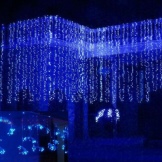
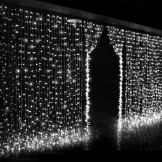
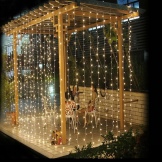
The output and technical characteristics of "rain" lights are of several types. First of all, differentiation occurs in relation to the level of protection assigned to them, depending on where the product will be used. And also taken into account in this humidity and the amount of dust (according to GOST 14254-96). The designation is written in the form of symbols "IPyz", where "y" is the degree of protection against dust exposure, and "z" is the level of protection from moisture.
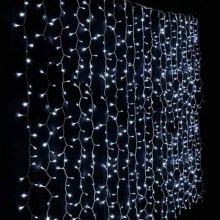
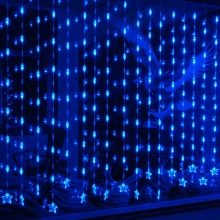
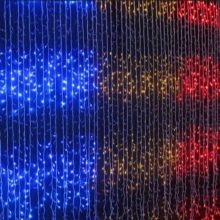
Light rain, which has miniature LEDs, is marked with IP20 (it should always be on the box) and is suitable for use in any room.
LEDs do not have adequate protection against moisture, therefore such products should not be used in saunas or swimming pools. If there is an IP44 marking, then such a garland is not recommended for use outdoors, since there is no protection against moisture and condensation. In such garlands there are always two dozen luminous threads, sometimes their number reaches twenty-five. Products that are used in outdoor conditions are marked with IP54 marking. In them, the cable is thoroughly protected by several layers of insulation, and there are also special protective coatings that protect the bulbs from moisture drops.
Such garlands can be found:
- on the walls of houses;
- on the roofs of buildings;
- on the visors of building structures.
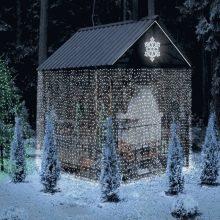

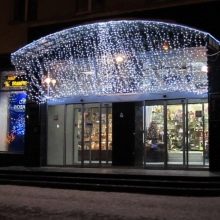
There are even more reliable products with the IP65 marking. Cables and all joints have additional rubber insulation (designation R), they may contain rubber (designation G). The LED elements are completely insulated here and are therefore allowed to be used even under water. It is these kind of light "showers" that are used in most regions of Russia.
The aesthetic effect of "rain" is quite tangible, but they are also characterized by other positive qualities:
- significant energy savings;
- safety of use;
- low price;
- ease of installation;
- increased plasticity;
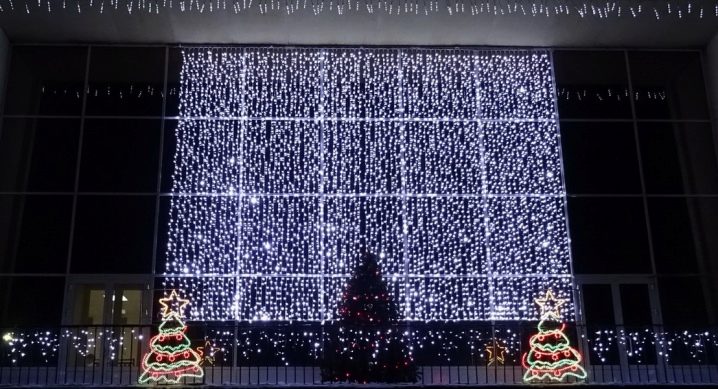
- low heating of elements;
- little weight;
- glow stability;
- stable work in harsh conditions;
- long service life.
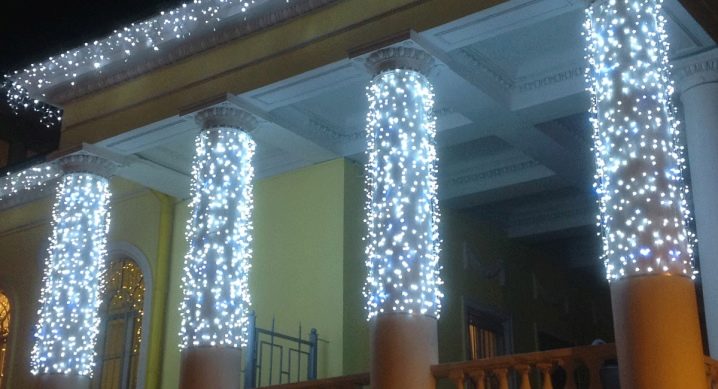
Such garlands have the ability to work according to certain algorithms. You can set various programs, according to which flickers and overflows will occur with a certain frequency.
Varieties of light curtains
The device of the "rain" lighting strings is, in essence, simple: other wires are attached to the main wire. Power is supplied from the electrical network on one side, and the control unit is attached to the other end of the network.
Numerous varieties of "rain" are made of this type, of which the most popular are:
- "Meteorite";
- "waterfall";
- "curtain";
- "New Year".
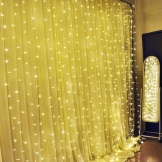
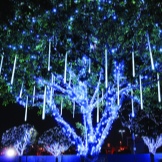

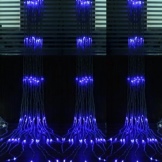
The sizes of lighting devices can be very different. Sometimes they "cover" the facades of houses that stretch for tens and hundreds of meters. Garlands are connected in series in the amount of several pieces.The circuits are parallelized, so if one "branch" fails, the rest of the system will continue to work.
"Flickering garland" is when light sources change their saturation of radiation over a certain period of time. This can last at different frequencies and intensities, and a warm white light is emitted. In such devices, every fifth or sixth diode flashes at a certain frequency. Such garlands look very good inside various rooms, as well as on the facades of buildings. Often whole compositions are assembled from such lighting devices, which can look very impressive.
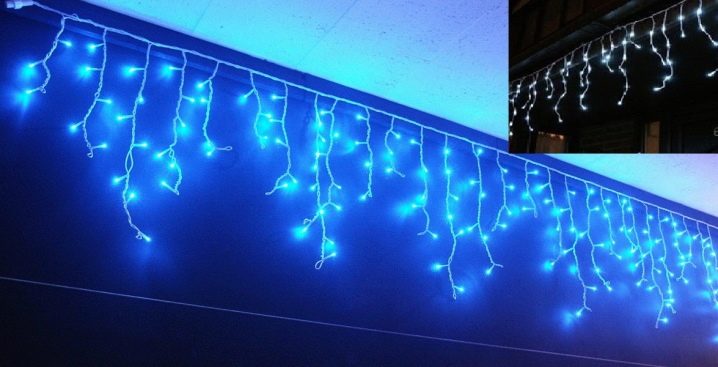
"Chameleon" is a colored garland in which different colors change, there may be several light modes. "Rain" is the most common type of garlands, there are several types. For example, "Curtain". In this case, there is an iridescent multi-colored glow. The threads are differentiated from 1.4 to 9.3 meters. At the same time, the width of the source remains standard - 1.95 meters. It is very easy to count: if you need to "process" a plot of 20 square meters. meters, you will need at least 10 pieces.
Products that are mounted on city streets are as follows:
- Icicles;
- "Ice Snowflakes";
- "Falling snow";
- "Net";
- "Stars";
- "Drops".

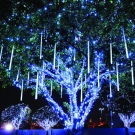

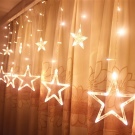
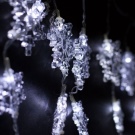

Often garlands are used with various metallic light structures. According to the parameters, there is a certain differentiation of such products. There are simple diode bulbs that work without any lighting effects. The device of such garlands is simple; as a rule, they do not have a fastening coupling. Such devices look good, but it is recommended to understand that the branches in such garlands can no longer be replaced.

Most often, buildings and balconies are decorated with such garlands. The length of the threads ranges from 0.22 meters to 1.2 meters. For example, "Icicles" are plastic luminous elements arranged vertically, they contain LEDs, and outwardly they really look like icicles. Belt Light is another popular look. It consists of a narrow strip, a five-core cable is located in it, on which insulated sockets are mounted, to which various types of lamps are connected (the distance varies from 12 to 45 cm).
Colors are usually:
- Red;
- yellow;
- gold;
- green;
- blue.
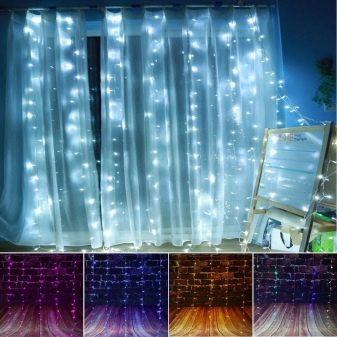
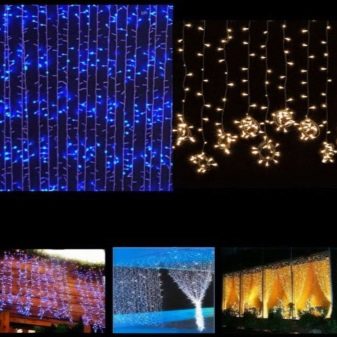
Selection recommendations
When choosing a garland "Light rain", you should focus on the fact that the length of the threads declared by the manufacturer is the length in their straightened position. In fact, in vertical working condition, the length of the thread will be noticeably shorter - on average by 12%. All nodes in garlands that work on the streets must be insulated and have appropriate quality certificates. The degree of protection must not be lower than IP65. A product like this can withstand heavy rain and snowstorms.
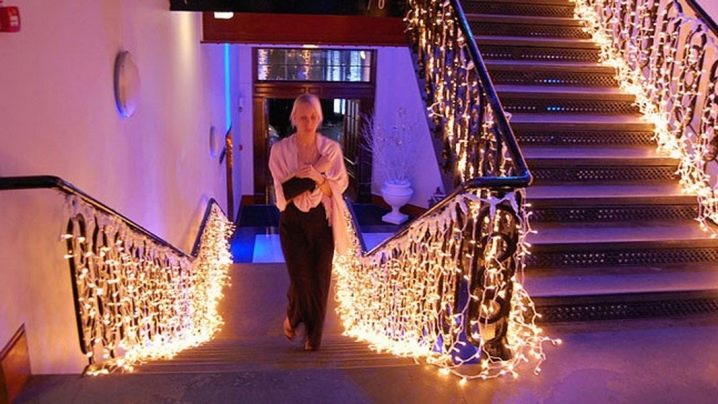
It is also worth paying attention to the rubber curtains, which also meet all established standards. All garlands can be combined into one, which makes it possible to create a single light unit that can cover a fairly large area. In this case, the food should be the same.
"Light rain" can have both static and dynamic light, this is indicated on the packaging, as well as in the instructions. An important factor is the diameter of the wire, what kind of protection it has. If the wire is massive, then it is more durable and will better withstand external wind loads. It is important to choose the right power supply, it must necessarily have an additional power reserve. All this will help to avoid short circuits in the event of unexpected power surges.

If the garland is several tens of meters long, then it is likely that an additional power supply will be required to evenly distribute the load. Care should be taken that the transformer is also reliably insulated against moisture ingress.
How to hang a garland?
Luminous garlands always create an elevated festive atmosphere, but precautions should be taken during installation and operation. Like any technical product, garlands are fraught with potential danger, whether it is installing a garland on a window or on the facade of a high-rise building. Before attaching the garland, you should carefully examine the object. It is necessary to understand: what elements of the building you will have to work with.
Most often these are:
- window;
- balconies;
- visors;
- parapets.
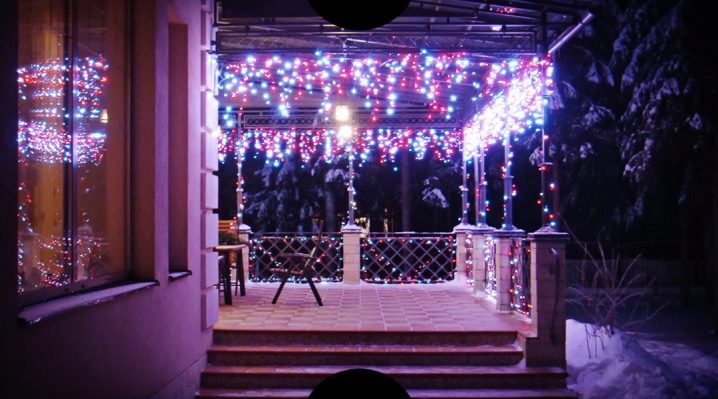
It is imperative to draw a diagram from which it will be clear with an approximation of 95% how long the garland will be. The closest power source must be selected, then it will be clear how many meters of the cord will be needed. In the work, you will definitely need a sliding ladder, which must be equipped with a special hook. The installation of the product itself begins with the fastening of the mounting hooks. It is imperative to take into account the distance between the bulbs when installing the garlands. The garlands are joined end-to-end and securely attached to the roof or wall of the house.

For information on how to make LED curtains with your own hands, see the next video.













The comment was sent successfully.